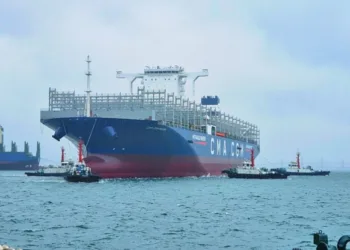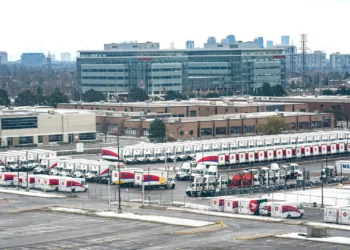Container shipping is faced with a supply/demand imbalance through to the end of the decade, according to new analysis from Asian consultancy Linerlytica.
A slowing global economy alongside record amounts of newbuild tonnage pouring out of Asian shipyards is anticipated to put the brakes on earnings with the 2020s, to date, having been the most profitable period in liner shipping history.
“[C]ontainership fleet growth will continue to outpace demand growth, with excess supply projected to persist through 2029,” Linerlytica argued in a new report (see chart below).
Hua Joo Tan, Linerlytica’s co-founder, told Splash that the forecast does not account for the Red Sea shipping crisis. A reversion from the Cape route to the Red Sea would add a further 7% to the effective supply of containerships and would worsen the oversupply equation, Tan warned.
“The current ship order binge would lead to significant oversupply in 2027 and 2028, and this already incorporates an increase in vessel scrapping of over 600,000 teu per year,” Tan told Splash.
The International Monetary Fund (IMF) has just published the July 2025 update to its World Economic Outlook report. World trade growth is now projected at 3.5% in 2025, a sharp upward revision, before slowing to just 1.9% in 2026, as the effect of cargo front-loading reverses.
Commenting on the IMF report, analysts at Sea-Intelligence suggested: “This boom is projected to give way to a sharp slowdown in 2026, creating a significant whiplash risk for the container shipping industry. The current strength in trade volumes appears disconnected from underlying demand and is likely to correct itself.”
Sea-Intelligence argued that the global economic outlook suggests a period of “high uncertainty and volatility” ahead, where a sudden drop in demand in 2026 is a primary risk.
More immediately, the outlook for the second half of 2025 in the global container shipping market is shaping up to be a disappointing one, with weak demand, overcapacity, and trade policy turbulence leading liners to rethink their full-year financial outlook. Last week saw Japan’s Ocean Network Express revise downwards its projections for the full fiscal year, other lines are likely to follow suit.
Freight indices reflect the gloom. The Shanghai Containerized Freight Index (SCFI) has dropped for eight consecutive weeks, with carriers’ planned August rate increases failing to stick amid a supply-demand imbalance.
ONE, the world’s sixth-largest liner, released its Q1 results last Friday, slashing $400m off its full-year forecast with CEO Jeremy Nixon citing ongoing geopolitical and economic challenges.
“Our full year forecast is likely to face headwinds from continued geopolitical uncertainties and evolving market conditions in key economies and port congestion that impact global supply chains,” Nixon said.
According to Sea-Intelligence, early June’s short-lived rate rally has faded, and the much-anticipated peak season may be absent altogether. In a worst-case scenario, August volumes could plunge as much as 26% year-on-year, triggering more blank sailings and downward rate pressure.
Even if a short, urgent surge materialises in late September—driven by US importers scrambling to ship goods ahead of China’s Golden Week—analysts warn this would be a temporary blip. “We may see another spike in rates like June, followed by another steep drop,” Sea-Intelligence noted.






















